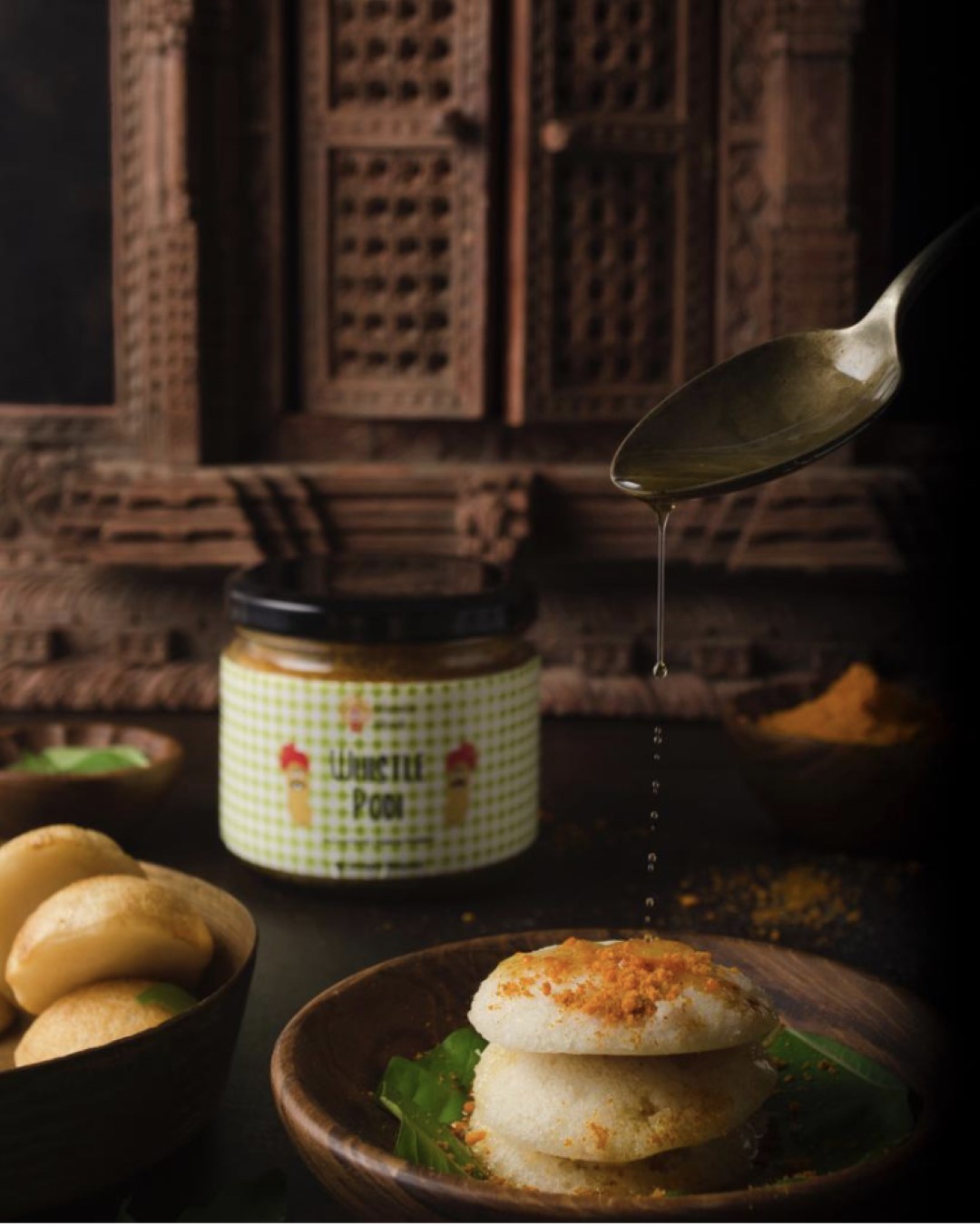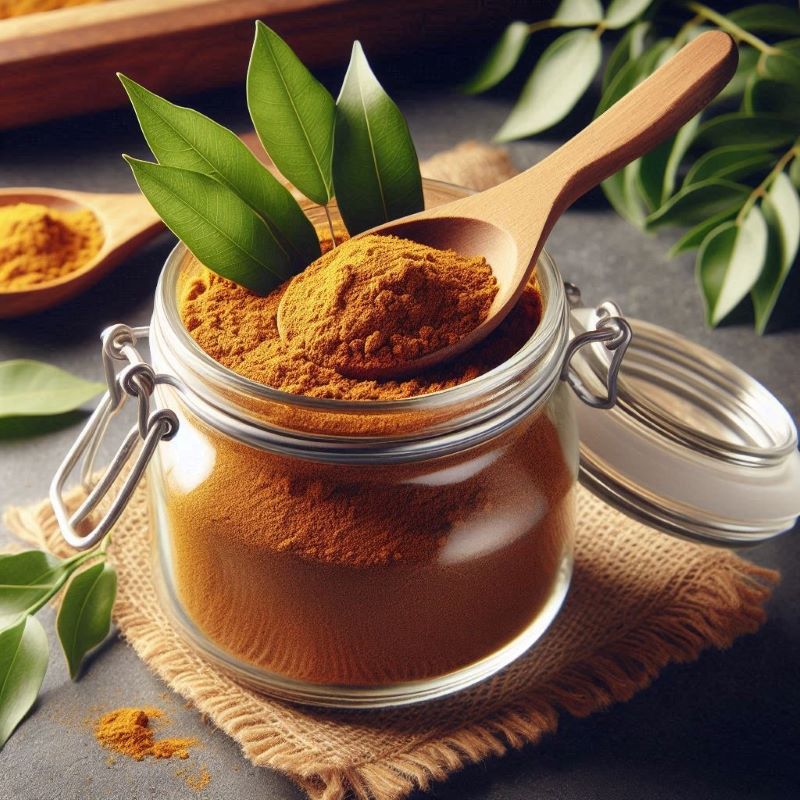
People ask me if its worth grinding your own spices and the short and sweet answer is absolutely yes! Grinding spices is fast and an easy process. It is an aromatic experience that you will not forget and might even become obsessed with it. There is ZERO COMPARISON between fresh and pre-ground versions. When you are grinding your own spices, you have a complete quality control over the quality of the ingredients you are using and you are also saving yourself from consuming all the unnecessary preservatives that are added to some spice mixes to increase their shelf life.
I love Sambar! If you guys are sambar lovers like me, you would know the key to making good sambar lies in the masala. That’s what I am here to share with you guys. This recipe will help you to make fragrant and flavorful homemade sambar powder. It can also be added to other south Indian dishes like lemon rice, masala idlis or dosa.
It has been almost a decade since I have stopped buying sambar powder. None of them come close to the one made freshly at home with quality ingredients. There is just something so satisfying about grinding your own masalas at home. My kitchen is filled with the aroma of spices, and sambar sings with the flavors of freshly toasted spices. That being said, I do admit, I don’t make all the masalas at home. That’s too much. I do buy some spice powders from the store but whenever I get an authentic fool-proof recipe like this, it’s hard for me to go back to store-bought masalas.

So what makes a good sambar?
- The right propotion to vegetables and lentils and a perfect balance of sourness, spiciness and sweetness.
- The vegetables you add make a huge difference to the taste of your sambar.
- Vegetables like small pearl onions, drumstick, yellow pumpkin have a distinct taste to them and elevate the taste of a sambar. Some like to add brinjal too.
- Similarly the choice of dal used affects a sambar’s taste. Mostly sambars are made with toor dal or a combination of toor and moong dal.
- Everyone has a different recipe for the spice mix. Some keep it simple with basic ingredients, some decide to add a lot more, some use pre ground spices, some grind it fresh. All these factors have a huge imapact on the taste of your sambar. And yes a good SAMBAR MASALA plays a huge part in the taste of your sambar.

Recipe: makes roughly 200 grams
Ingredients
- Coriander seeds: 1/2 cup
- Chana dal/Bengal gram: 1/4th cup
- White Split Urad dal: 2 tbsps
- Cumin seeds/Jeera: 2 tbsps
- Fenugreek seeds/Methi dana: 1 tbsp
- Mustard seeds: 1 tbsp
- Dry Red Chillies: 20 (I added 15; depends how hot you like it)
- Curry leaves: Handful
- Black peppercorns: 1.5 tbsp
- Asafoetida/Hing: 1/2 tsp
- Turmeric powder: 1 tbsp

Instructions
- Take a heavy bottom wide flat pan. Heat it on a very low heat.
- Take a wide plate to collect all the roasted spices and lentils.
- Wash and towel dry both the lentils.
- Firstly, roast channa dal on low flame till it becomes fragrant and turns couple of shades darker. Chana dal will take the most time to roast. Take it off heat and put it on a wide plate.
- Now roast urad dal till it turns lightish brown. Urad dal will be done the quickest, because of the size of the lentils. Keep aside.
- Next add cumin seeds and roast them till they become darker and give out a very nice aroma.
- After cumin seeds, roast coriander seeds. Roast on low flame till the coriander seeds get well roasted. When well roasted – the coriander seeds will turn lightly reddish, and also leave a light aroma.
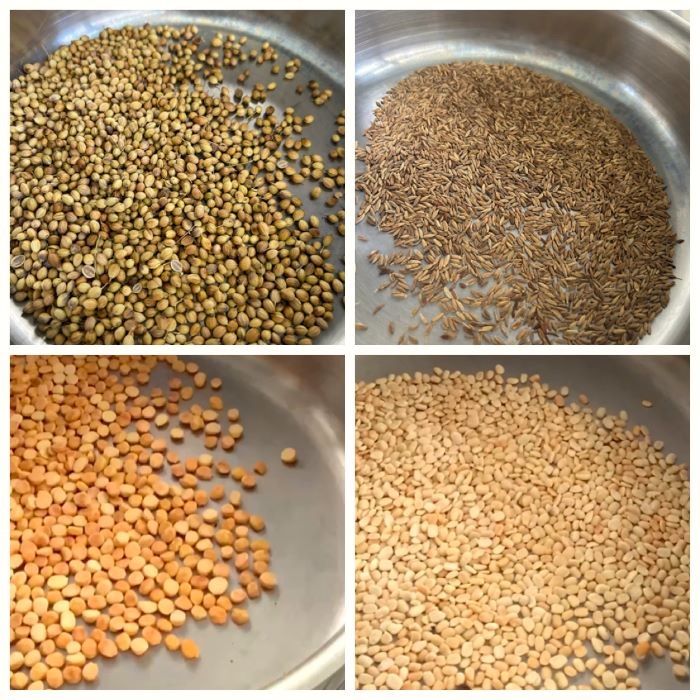
- Now add in dry red chillies and roast them for few minutes till it starts becoming fragrant. Ensure to not burn the chillies. When well roasted – they will turn deeper in color.
- Next add black pepper corns and roast for a minute or two on low flame.
- After black pepper, add mustard seeds. Roast till they start spluttering. Keep aside.
- Now, roast curry leaves till leaves shrink and become crisp.
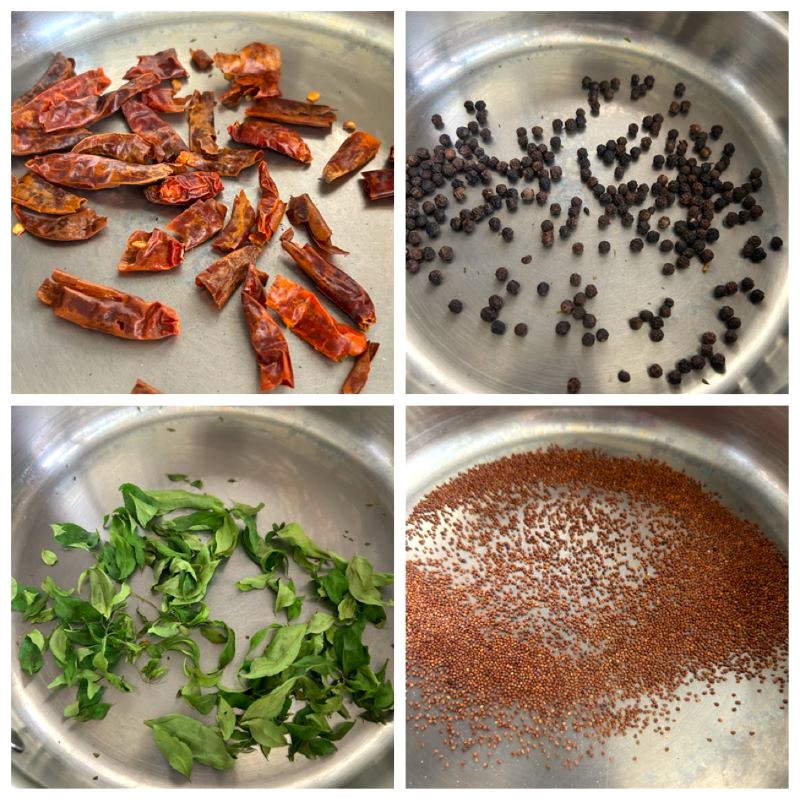
- Finally, roast fenugreek seeds or methi dana for a minute on low flame till it becomes golden.
- After switching off the flame, add asafoetida or hing in the pan while the pan is still hot. Roast for 10 to 15 seconds and mix it with other spices.
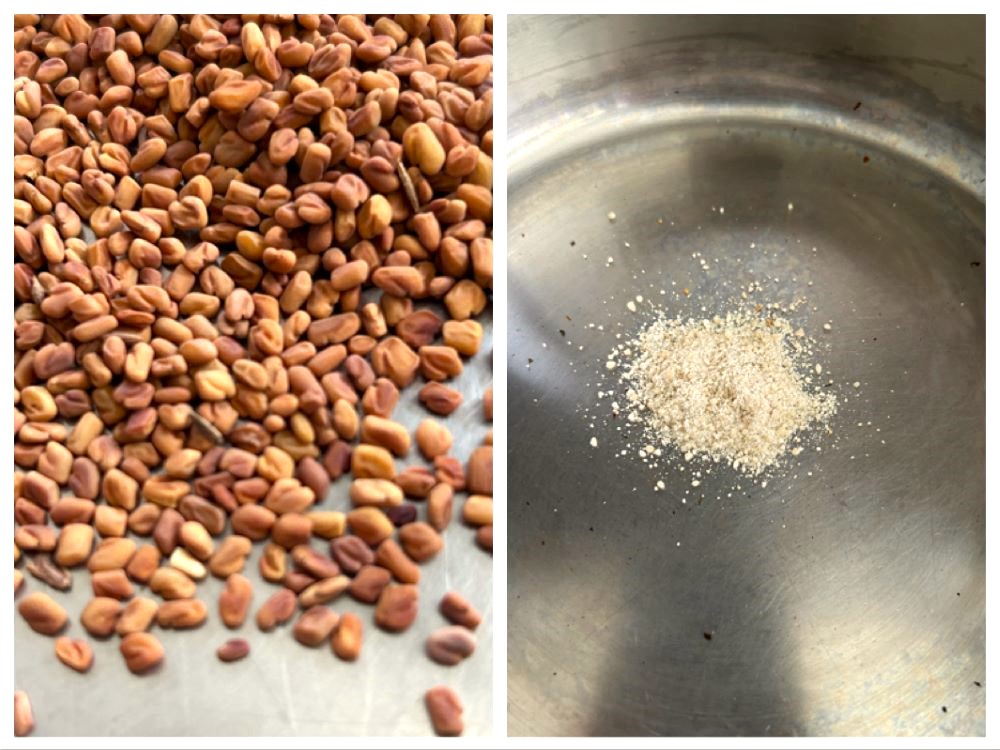
- Once the spices have cooled a little, add everything in a dry mixer. Add turmeric powder and grind everything to a fine powder.
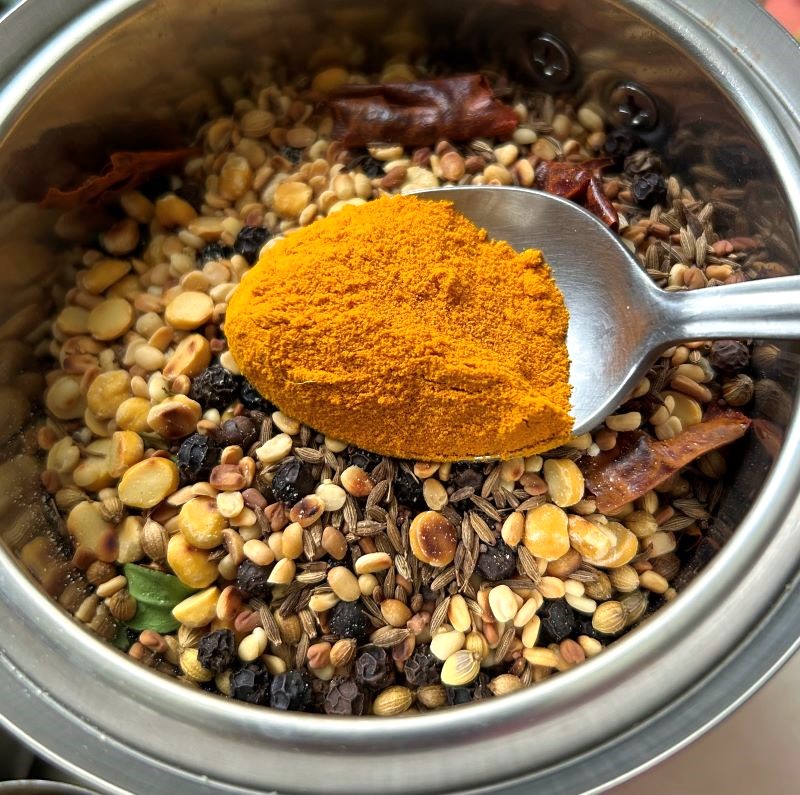
- Sambar powder is ready to use or store. For storing – store it in a dry and air tight glass container at room temperature.
Notes
- Low flame is critical to get a good even roast on the ingredients, so do not try and speed up the process by increasing the flame.
- You can dry roast everything simultaneously on different burners if you can keep a hawk’s eye on all the spices. This will definitely save you time though.
- Sambar powder is best stored in a dry and air tight glass container at room temperature.
- This Sambar masala will last you 1 year. Spices in general last a long, long time. But yes! After a while they start to lose their potency.
- You can easily double or triple this recipe depending upon your requirement.
- People who have celiac disease, please be sure to read the label on asafoetida/hing. Many commercial brands process hing powder with wheat.
I hope you find this recipe useful. If you did then please let know in the comments below.

